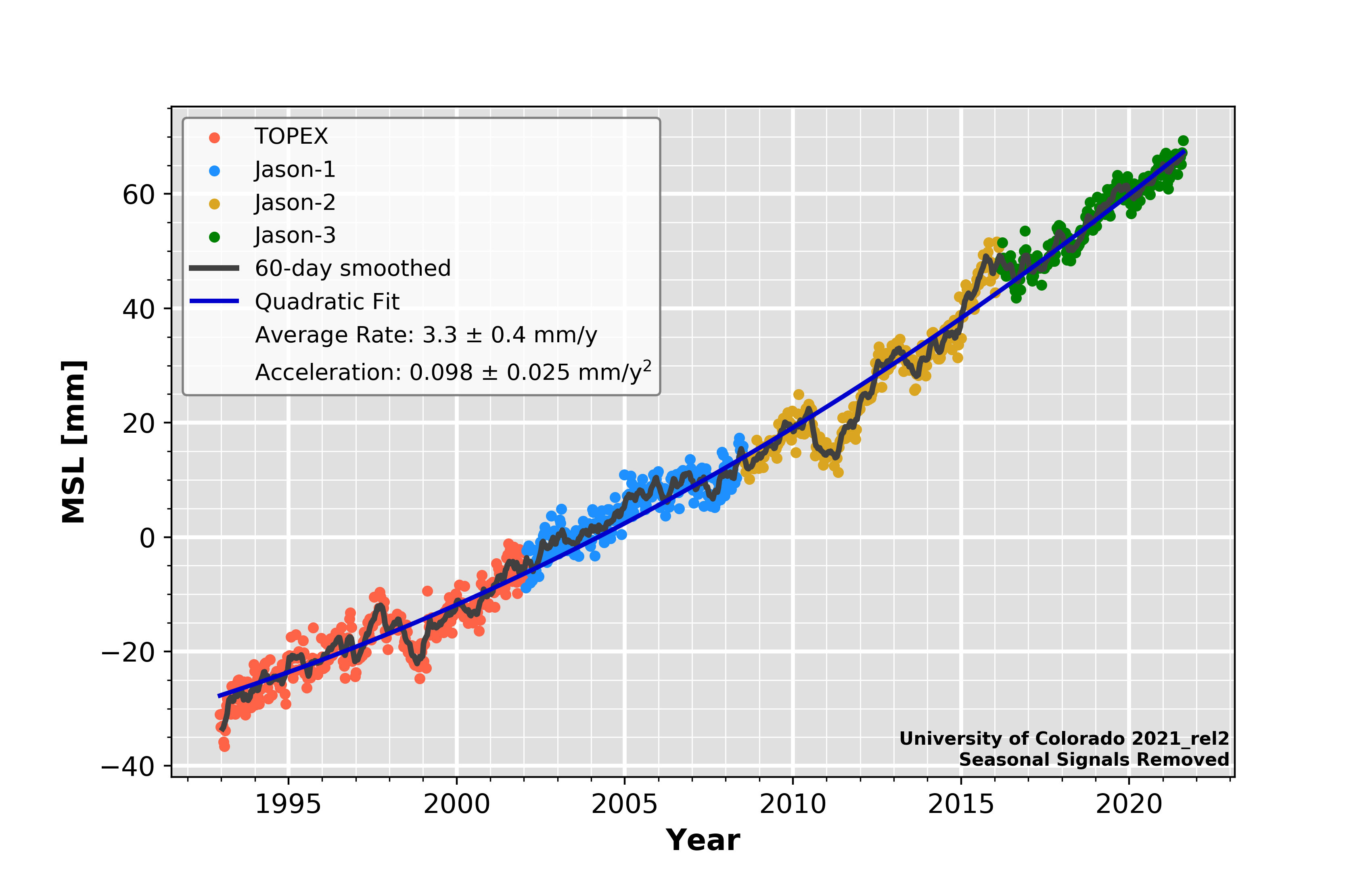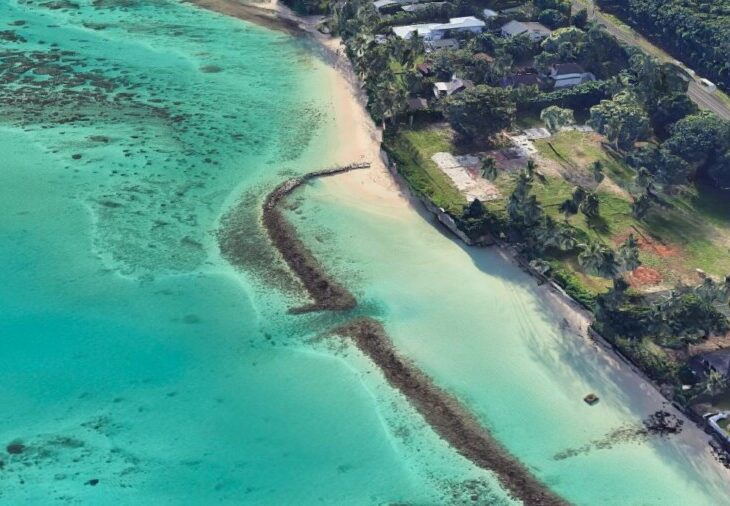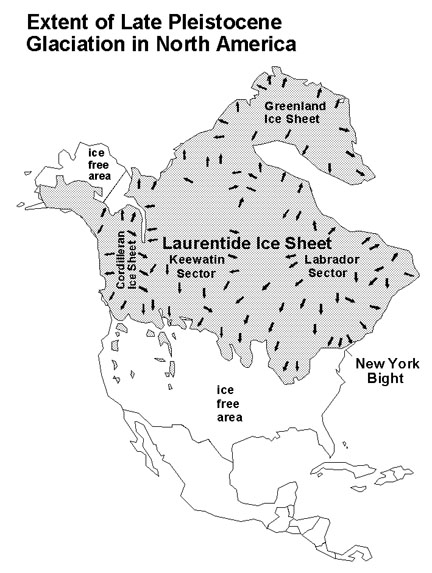The shorelines of the United States are projected to face an additional foot of rising seas over the next three decades, intensifying the threat of flooding and erosion to coastal communities across the country, according to a report released Tuesday by the National Oceanic and Atmospheric Administration.
Human-caused climate change, driven mostly by the burning of fossil fuels, has accelerated global sea level rise to the fastest rate in more than 3,000 years. The report by NOAA and other federal agencies — updating a study from 2017 — predicts that ocean levels along U.S. coasts will increase as much by 2050 as they did over the past century.
This amount of water battering the coasts “will create a profound increase in the frequency of coastal flooding, even in the absence of storms or heavy rainfall,” NOAA said.
“We’re unfortunately headed for a flood regime shift,” said William Sweet, an oceanographer at the NOAA National Ocean Service and the nation’s top scientist on sea level rise. “There will be water in the streets unless action is taken in more and more communities.”
Projections of sea level rise — relative to a baseline of 2000 — for five emissions scenarios and an extrapolation of observations (labeled as present trajectory) for the globe and contiguous United States. (NOAA)
Drawing on data from tidal gauges and satellite imagery as well as cutting-edge models from the most recent United Nations report on climate change, the NOAA analysis gives decade-by-decade projections for sea-level rise for all U.S. states and territories over the next 100 years. Advances in ice sheet modeling and better observational data allowed the authors to give more definitive near-term projections than ever before, Sweet said.
ADVERTISING
Even if the world takes swift action to curb carbon emissions, he said, the trajectory for sea level rise “is more or less set over the next 30 years.”
Kristina Dahl, a principal climate scientist with the Union of Concerned Scientists, said research she and colleagues have done suggest that 10 to 12 inches of sea level rise by 2050 would put roughly 140,000 homes at risk of “chronic inundation,” or flooding every other week on average.
Already, she said, high-tide flooding in places such as Charleston, S.C., has quadrupled in frequency since the 1970s. Other communities, from Louisiana to New Jersey to the Eastern Shore of Maryland, have wrestled with flooding that has become more common and costly.
“They’re already having to make difficult decisions or major investments to cope with the flooding they are seeing,” said Dahl, who was not involved in Tuesday’s report. While other coastal communities have avoided major impacts, “they will have to start grappling with these same kind of issues.”
Federal report: High-tide flooding could happen ‘every other day’ by late this century
Looking ahead to the end of the century, the amount of planet-warming pollution people release into the atmosphere could mean the difference between sea levels stabilizing at about two feet above the historical average or surging by almost eight feet, NOAA reports.
“This report is a wake-up call for the U.S., but it’s a wake-up call with a silver lining,” NOAA administrator Rick Spinrad told journalists Tuesday. “It provides us with information needed to act now to best position ourselves for the future.”
A woman walks her dogs through a flooded area of Annapolis in the aftermath of Hurricane Sandy in 2012. (Marvin Joseph/The Washington Post)
In years past, powerful storms pushing water up shorelines were the primary drivers of flooding along coasts. But as surging seas raise the level of high tides, communities from the Gulf Coast and the Pacific Northwest to the beaches of Hawaii and the barrier islands of North Carolina increasingly suffer from “sunny day” floods, when saltwater bubbles up from storm drains and spills into streets without a drop of rain.
A report released last year by Sweet and his Ocean Service colleagues found that U.S. coastlines experience twice as much high-tide flooding as they did just 20 years ago.
By the middle of the century, the new NOAA analysis finds, minor high-tide flooding events could happen more than 10 times a year. More significant and destructive events, which currently have about a 4 percent chance of happening in a given year, could occur twice a decade.
“We are talking about flooding reaching an extra three feet or so above the average high tide,” Sweet said. “There are going to be serious consequences.”
This means coastal communities must start planning for regular inundation, scientists warned, especially in places where coastal development and sinking land compound the risks of sea level rise.
Storm and wastewater systems may need to be upgraded to cope with the influx of seawater. Homes and important infrastructure located within the new upper bounds of high tides might have to relocate.
Human-caused climate change, driven mostly by the burning of fossil fuels, has accelerated global sea level rise to the fastest rate in more than 3,000 years. The report by NOAA and other federal agencies — updating a study from 2017 — predicts that ocean levels along U.S. coasts will increase as much by 2050 as they did over the past century.
This amount of water battering the coasts “will create a profound increase in the frequency of coastal flooding, even in the absence of storms or heavy rainfall,” NOAA said.
“We’re unfortunately headed for a flood regime shift,” said William Sweet, an oceanographer at the NOAA National Ocean Service and the nation’s top scientist on sea level rise. “There will be water in the streets unless action is taken in more and more communities.”
Projections of sea level rise — relative to a baseline of 2000 — for five emissions scenarios and an extrapolation of observations (labeled as present trajectory) for the globe and contiguous United States. (NOAA)
Drawing on data from tidal gauges and satellite imagery as well as cutting-edge models from the most recent United Nations report on climate change, the NOAA analysis gives decade-by-decade projections for sea-level rise for all U.S. states and territories over the next 100 years. Advances in ice sheet modeling and better observational data allowed the authors to give more definitive near-term projections than ever before, Sweet said.
ADVERTISING
Even if the world takes swift action to curb carbon emissions, he said, the trajectory for sea level rise “is more or less set over the next 30 years.”
Kristina Dahl, a principal climate scientist with the Union of Concerned Scientists, said research she and colleagues have done suggest that 10 to 12 inches of sea level rise by 2050 would put roughly 140,000 homes at risk of “chronic inundation,” or flooding every other week on average.
Already, she said, high-tide flooding in places such as Charleston, S.C., has quadrupled in frequency since the 1970s. Other communities, from Louisiana to New Jersey to the Eastern Shore of Maryland, have wrestled with flooding that has become more common and costly.
“They’re already having to make difficult decisions or major investments to cope with the flooding they are seeing,” said Dahl, who was not involved in Tuesday’s report. While other coastal communities have avoided major impacts, “they will have to start grappling with these same kind of issues.”
Federal report: High-tide flooding could happen ‘every other day’ by late this century
Looking ahead to the end of the century, the amount of planet-warming pollution people release into the atmosphere could mean the difference between sea levels stabilizing at about two feet above the historical average or surging by almost eight feet, NOAA reports.
“This report is a wake-up call for the U.S., but it’s a wake-up call with a silver lining,” NOAA administrator Rick Spinrad told journalists Tuesday. “It provides us with information needed to act now to best position ourselves for the future.”
A woman walks her dogs through a flooded area of Annapolis in the aftermath of Hurricane Sandy in 2012. (Marvin Joseph/The Washington Post)
In years past, powerful storms pushing water up shorelines were the primary drivers of flooding along coasts. But as surging seas raise the level of high tides, communities from the Gulf Coast and the Pacific Northwest to the beaches of Hawaii and the barrier islands of North Carolina increasingly suffer from “sunny day” floods, when saltwater bubbles up from storm drains and spills into streets without a drop of rain.
A report released last year by Sweet and his Ocean Service colleagues found that U.S. coastlines experience twice as much high-tide flooding as they did just 20 years ago.
By the middle of the century, the new NOAA analysis finds, minor high-tide flooding events could happen more than 10 times a year. More significant and destructive events, which currently have about a 4 percent chance of happening in a given year, could occur twice a decade.
“We are talking about flooding reaching an extra three feet or so above the average high tide,” Sweet said. “There are going to be serious consequences.”
This means coastal communities must start planning for regular inundation, scientists warned, especially in places where coastal development and sinking land compound the risks of sea level rise.
Storm and wastewater systems may need to be upgraded to cope with the influx of seawater. Homes and important infrastructure located within the new upper bounds of high tides might have to relocate.







